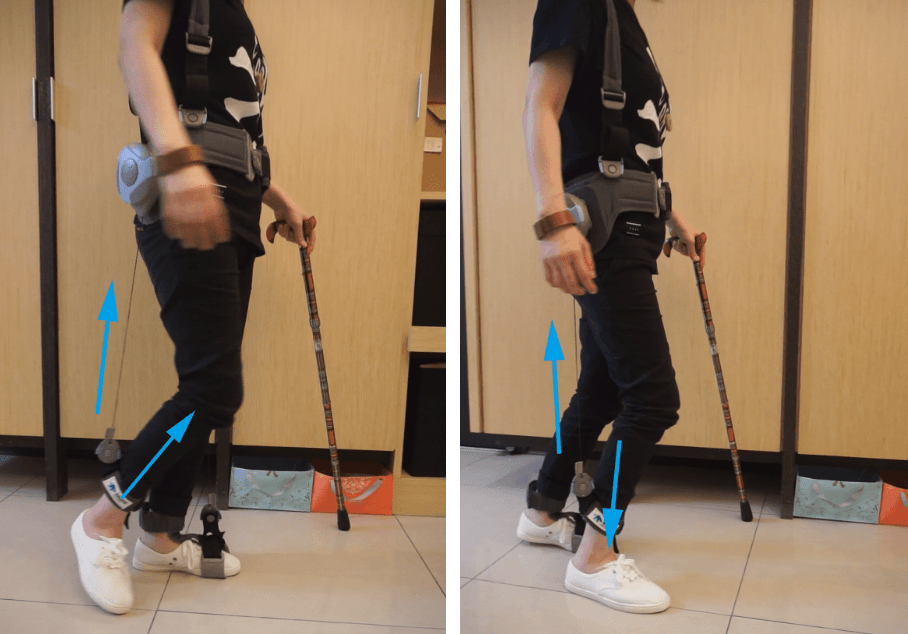Cerebral Palsy, resulting from brain damage or abnormal brain development before, during, or shortly after birth, presents as a spectrum of motor impairments. No two individuals with CP are exactly alike. Some may experience mild coordination issues, while others face significant mobility limitations affecting their ability to walk, balance, or even sit independently. A common question that arises is, "Can people with Cerebral Palsy walk?" The answer, as we'll explore, varies widely, and targeted interventions are key.
The challenges in CP rehabilitation are multi-faceted:
Just Walk: A New Approach in CP Physical Therapy
In the pursuit of innovative tools that can address these challenges and potentially accelerate progress, the Just Walk system has emerged as a truly transformative solution. It offers a unique blend of active assistance, portability, and comprehensive training capabilities. This innovative device directly supports the complex needs of physical therapy treatment for cerebral palsy.

How Just Walk Addresses CP Rehabilitation Challenges:
1.Active, Dynamic Gait Re-education:
Unlike passive walking aids, Just Walk is a revolutionary, magnet-driven wearable system designed for active neuromotor rehabilitation. It doesn't just support; it guides and assists, fundamentally changing how people with Cerebral Palsy can walk with greater independence.
- Differentiation: Its core mechanism provides a gentle yet effective lift to the foot at the beginning of each step, addressing common challenges like foot drop. As the leg swings forward, it introduces adjustable resistive forces (with four levels), actively strengthening muscles and promoting a more fluid, natural gait cycle. This active engagement is vital for re-training damaged neural pathways.
- Benefit for CP: This direct assistance in gait mechanics is invaluable. It aims to help individuals with spasticity to break free from stiff, awkward patterns and those with weakness to activate necessary muscles. By facilitating controlled, precise movements, Just Walk directly promotes the neuroplastic changes essential for improving walking ability and coordination.
2.Unparalleled Portability and Integration:
- Differentiation: Weighing a mere 3lb, Just Walk is exceptionally light and portable. This contrasts sharply with bulky, stationary gait trainers or robotic systems.
- Benefit for CP: This ultra-portability means that high-quality, targeted physical therapy treatment for cerebral palsy can extend far beyond a clinical setting. Individuals can incorporate gait training, stair climbing practice, lateral movements, and activities of daily living (ADLs) directly into their home environment, school, or community outings. This continuous, real-world practice aims to consolidate motor learning and transfer skills learned in therapy to everyday functional tasks, fostering genuine independence and demonstrating how people with Cerebral Palsy can walk more effectively in various settings.
3. Holistic Strength and Endurance Building:
- Differentiation: Just Walk isn't just a walking aid; it cleverly transforms into a wearable resistance gym.
- Benefit for CP: Muscle weakness and reduced endurance are pervasive issues in CP. The ability to perform targeted muscle strengthening and endurance training with adjustable resistance, wherever the individual is, significantly augments traditional therapy. This integrated approach aims to build the core strength and stamina necessary for improved balance, sustained walking, and overall participation in life. Its detachable hand grips also allow for upper body neuromotor rehabilitation, addressing another common area of need.
4.Efficiency and Consistency:
- Differentiation: Clinical research indicates that just 15-20 minute sessions, twice daily, are sufficient for consolidating neuromotor patterns.
- Benefit for CP: This efficiency is crucial for adherence. Intensive, long therapy sessions can be tiring for individuals with CP and their families. Just Walk allows for consistent, impactful bursts of therapy that can be easily integrated into a daily schedule, potentially leading to more consistent progress over time. It aims to provide the high repetition needed for neuroplastic change without the associated fatigue often found in manual therapy alone, optimizing physical therapy treatment for cerebral palsy.
Just Walk is presented as an adjunct that extends the reach and effectiveness of
physical therapy treatment for cerebral palsy.
It aims to empower individuals to be more active participants in their own rehabilitation, potentially providing the precise, repetitive, and functional training needed to unlock their mobility potential.
FAQs
Q1: What is Physical Therapy Treatment for Cerebral Palsy? A: Physical therapy treatment for Cerebral Palsy aims to improve movement, strength, balance, and independence through exercises, stretches, and specialized techniques, helping individuals participate more fully in daily life.
Q2: Can People with Cerebral Palsy Walk? A: Yes, many people with Cerebral Palsy can walk, though their ability varies greatly. Mobility ranges from walking independently to requiring assistance or a wheelchair, with ongoing physical therapy treatment for cerebral palsy often improving walking efficiency.
Q3: What are the biggest challenges in helping someone with CP to walk? A: Key challenges include managing abnormal muscle tone (spasticity), weakness, poor balance, coordination issues, and overcoming compensatory movements, all of which impact how people with Cerebral Palsy can walk.
Q4: How does Just Walk specifically help with the physical therapy goals for CP? A: Just Walk assists with gait and walking by providing active foot lift and resistance, building strength, enhancing neuroplasticity, and enabling consistent functional practice for physical therapy.
Q5: Is Just Walk suitable for all levels of Cerebral Palsy?
A: It benefits individuals working on improving independent or assisted
walking and functional mobility across various GMFCS levels. Consultation with a healthcare professional or
physical therapist is recommended to assess suitability for their
physical therapy treatment for cerebral palsy.
Sources
- Cerebral Palsy Foundation. "Physical Therapy."
- Palisano, R. J., et al. (1997). "Development and Reliability of a Classification System for Gross Motor Function in Children with Cerebral Palsy." Developmental Medicine & Child Neurology, 39(4), 214-223.
- Flint Rehab. "Cerebral Palsy Gait Training: Can Your Walking Improve?"
- Physiopedia. "Physiotherapy Treatment Approaches for Individuals with Cerebral Palsy."
Important
This article is for informational purposes only and is not a substitute for professional medical advice; always consult your doctor or physical therapist before starting any exercise or using any device.



